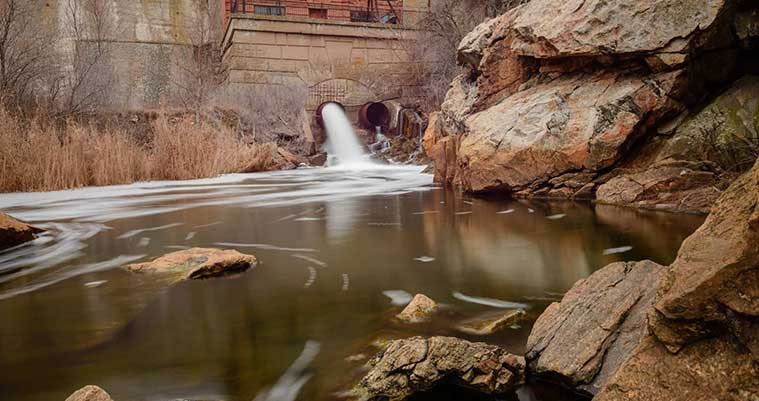Independent Testing of Green Infrastructure

Flooding and pollution from severe weather is a challenge for jurisdictions across the United States, and many officials are turning to green infrastructure (GI) solutions. But with few testing standards in place to ensure that GI systems perform as designed, how can your clients get proof that their facilities are up to par? Can GI designs be tested in a laboratory prior to installation?
The problem of flooding and pollution
Interior flooding and pollution from stormwater floods, flash floods, or urban drainage issues is a growing phenomenon in many U.S. cities. Flooding wreaks havoc for residents and officials through basement sewer backups, overstrained pumping stations, combined sewer overflows, and other general problems caused by severe weather. And the anticipated increase of severe weather from climate change means we should expect these problems to get worse.
Stormwater management systems (gray infrastructure), including expensive diversion systems, are one popular solution, but these systems have drawbacks such as cost, time to implement, and low community support (from cost and lack of visibility). GI alternatives or supplements to gray infrastructure are increasingly attractive to cash-strapped jurisdictions because they cost less, can be implemented quickly, and are visible to the public.
The goal of a GI system is to slow, reduce, retain, and clean up surface runoff. Elements of a GI system include green roofs, permeable pavements, rainwater harvesting, rain gardens/planter boxes, bioswales, bioretention ponds, urban tree canopies, and constructed wetlands. Design specifications for GI systems vary by jurisdiction, and there are few testing standards. So how will a jurisdiction know that their bioretention facilities will perform as designed?
Innovative solutions to GI testing
EBA Engineering’s materials testing lab has been providing custom testing services for GI facilities for several years now. For example, we have set up permeable concrete pavements in the lab and tested them for compressive strength and infiltration after placement. We have also tested the soils used for nutrient levels, including organic matter, pH, and soil texture classification.
Some state highway projects have involved testing in-place infiltration on existing bioswales. Design can impact bioswale performance significantly. A good balance between the soil nutrient levels, soil compactions, and biodiversity is required for a facility to perform well for many years.
In December 2017, a client approached us for a custom test to evaluate the proposed design for a bioretention facility. This was a performance-based, design-build project. The project owner required data to confirm that the bioretention facility would perform as designed prior to placement/installation. The evaluation needed to confirm if the proposed materials placed as designed would reduce, retain, and hold the surface runoff.
Project specifications required the proposed material to support various plants, have upper and lower infiltration rate thresholds, and be sufficiently compacted in the field to prevent settlement issues. Standard soil fertility tests—including pH, organics, textural analysis, and soluble salts—were performed on the bio-media to confirm it could support the proposed plant life. We then conducted a mesocosm test to measure the infiltration rate thresholds required in the specifications.
A mesocosm test attempts to simulate field conditions in a controlled lab environment. In this case, the proposed materials for the bioretention facility were mulch, bio-medium (topsoil), #57 stones, and #4 stones. The GI facility designer required these materials to be placed in a specific order and in specific thicknesses and to meet minimum compaction levels. The test results indicated that the client did not need to create a new mix design for this bio-medium. Material commercially available from the client’s long-term supplier would be adequate.
Providing custom testing like this for our clients is therefore a big deal! Independent testing saves our clients money while reassuring owners with solid data to prove that their facilities will perform as designed. Independent testing is instrumental in satisfying all stakeholders.
Nick Roles, PE, is a vice president at EBA Engineering, Inc. He can be reached at 410.504.6116 or nick.roles@ebaengineering.com.
